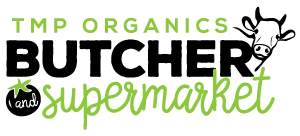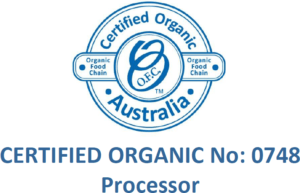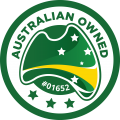Moulds & Dust
Moulds – are a common component of household and workplace dust. However, when mould spores are present in abnormally high quantities they can present health hazards to humans potentially causing allergic reactions & producing mycotoxins or causing fungal infections.
Health problems associated with high levels of airborne mould spores include asthma, allergic reactions, irritations of the eye, nose & throat, sinus congestion, & other respiratory problems. Mould may produce mycotoxins potentially causing toxicity. Make sure your home is well ventilated over winter & on a sunny day open the windows to fresh air.
Exposure Sources & Prevention- The main sources of mould exposure are from the indoor air in buildings with mould growth, and from ingestion of food with mould growths. Prevention of mould exposure & ensuing health issues include prevention of mould growth in the first place by avoiding a mould supporting environment such as humid air.
In the 1970s, building construction techniques changed in response to the changing economic realities including the energy crisis. As a result homes & buildings became more airtight. Newer building materials reduced the drying potential of structures making moisture problems more prevalent. This winter make sure you can air your home on a bright sunny day to reduce the potential of mould growth in your home & furnishings.
Other related issues include:
- Building biology
- Environmental health
- Occupational asthma
- Environmental engineering
- Ventilation issues in houses
- Occupational safety and health
Some suggested website contacts for natural products not necessarily endorsed by the authors are:
Visit www.aboutorganiccotton.org …to learn more about the importance of organic cotton to your health & the health of the environment.
www.blessedearth.com.au Organic cotton sheets/bedding,Pure Wool mattresses Maleny Qld
www.bambury.com.au Organic cotton sheets, bedding
www.relishdesigns.com.au Promoting Healthy Homes & Healthy Interiors.
www.blissecowear.com.au Eco-friendly fashion Paddington Brisbane
www.andatech.com.au Air quality, pure air units, removal of dust/air pollutants. VIC
www.ecostore.co.nz Natural products
www.livingnature.com Natural food & body products sourced from nature.
www.envirocareearth.com.au Environmentally responsible products.
Toxic Bathroom Guide Checklist
Here is a simple quick guide for those consumers wanting to make their bathroom toxic free.
Many personal care products contain a number of ingredients that are toxic and not necessarily safe. The following list of ingredients are some of the most common toxic ones:
- Hair Dyes– Phenylenediamine may cause blindness on eye contact, Coal tars may be carcinogenic & hydroxyanisole may affect the female reproductive system, artificial colours.
- Toothpaste- Fluoride, SLS, Saccharin, Propylene Glycol, Artificial flavours & colours.
- Hair Shampoos & Conditioners- SLS, SLES, Cocamiopropyl, betaine, Glycerin, tallow quarternium, coal tar, DEA, Alcohol, Propylene Glycol, Formaldehyde (Formalin), Dyes, Isopropanol.
- Hair Sprays & Styling- DEA, BHA, TEA, Alcohols, Methylene Chloride, Toluene, Fluorocarbons, avoid the use of aerosols.
- Mouthwash-Alcohol (more than 25% in mouthwash is linked to mouth, tongue & throat cancer). SLS-Sodium Lauryl Sulphate. Remember one of the quickest ways into the bloodstream is via the lining of the mouth, Chlorine.
- Antiperspirants: Aluminium possible link to Alzheimers disease & cancer, Propylene Glycol Alcohol & Triclosan. Use a roll on in preference to a spray with flurocarbons.
- Baby Wipes/Lotions: Alcohol, BHA, Propylene Glycol, Talc, SLS & SLES.
- Bubblebath/Body wash: SLS, SLES, DEA, TEA, MEA, Quatenium, PEG, Alcohol & synthetic fragrances. DEA- Diethanolamine, TEA- Triethanolamine, MEA Monoethanolamine, Synthetic Collagen,
- Soap: Tallow, lyre, skin irritants & may lead to dermatitis & eczema.
- Shaving Cream: SLS, Propylene Glycol, DEA, TEA, MEA, PEG.
- Sunscreen: Benzophenones, Dibenzoylmethanes, may cause cancer when heated.
- PABA (Para Amino Benzoic Acid).
- Nail treatments: Acetone, Acetonitrile (forms cyanide if swallowed), Formaldehyde, Toluene, Isopropanol.
- Skin Care/Cosmetics/Make Up- Propylene Glycol, DEA, TEA, 2-bromo2-nitropropane1,3 diol (Bronopol or BNPD), BHA, Coal Tar dyes, Formaldehyde, Glycerine, Alpha hydroxyl acids, Lanolin, Mineral oil, SLS, SLES (Sodium Lauryl Laureth Sulphate), Petrolatum, PEG, Bentonite & Kaolin.
- Toilet Paper: Bleaches, Synthetic perfumes & colours, dyes.
Substances linked to cancer in animals and/or humans, or are often contaminated with carcinogens, or readily forms carcinogen nitrosamines when mixed with other ingredients, include: acetone, alcohol, aluminium, BHA, BHT, DEA, Coal Tar Dyes, Sodium Fluoride, Formaldehyde, Hyhdroxyanisole, Isopropanol, Lanolin, MEA, PABA, PEG, Phenol, Phenylenediamine, Propylene Glycol, Quaternium, Saccharin, SLS/SLES, Talc, Toluene, Triclosan & TEA (Triethanolamine).
Substances linked to asthma include: BHA, BHT, DEA, Formaldehyde, Phenylenediamine, Toluene, all of which are often used in modern furniture.
Neurotoxins that may damage the Central Nervous System including those unborn include:Acetone, Aluminium, BHT, Ether, Isopropanol, Lanolin, POG, Phenylenediamine, Propylene Glycol, Toluene.
Substances that accumulate in the body’s organs include: Aluminium, BHA, BHT, DEA, Fluoride, Propylene Glycol, SLS, SLES, Triclosan.
Skin/eye irritants that may cause allergic reactions include: Acetone, Alcohol, alpha-Hydroxy Acids, Benzophenones, BHA, BHT, Collagen, Coal Tar Dyes, DEA, Ether, Formaldehyde, Isopropanol, Lanolin, MEA, Methylene Chloride, Mineral oil, PABA, PEG, Phenol, Propylene Glycol, SLS, SLES, Toluene, Triclosan, TEA.
GMO & Food Irradiation Free
Evidence is still questionable as to just how safe are GMO (Genetically Modified Foods). Some foods are already allowed for sale in Australia & are not labelled accordingly. The only way to ensure your food is GMO free is to buy certified organic, and check the labels of your supermarket product purchases very carefully.
From “ORGANIC ADVANTAGE” JUNE 2010 BFA-Biological Farmers Association
INDUSTRY NEWS-GREATER LABELLING OF IMPORTED FOOD PRODUCTS NEEDED
Labelling for imported products, processing aids, GM foods and food colouring are just some of the main concerns highlighted by the Biological Farmers of Australia Ltd (BFA) in its submission to Food Standards Australia New Zealand (FSANZ).In the submission made to the Department of Health and Ageing as part of the Food Labelling Review, the BFA has recently called for greater transparency in labelling and more choice for consumers.
Standards Convenor Dr Andrew Monk said the BFA believes that the current arrangement for imported products remains lax and confusing for consumers. “Particularly when it comes to clear and simple choice for consumers, a front of label ‘Imported Product’ or ‘Imported Ingredients’ label is required,” said BFA Dr Monk. “We also note the lack of transparency in relation to processing aids which may be present as breakdown products in packaged items that have undergone sanitizing washes using products such as hypochlorite – a commonly used pool cleaner,” he said.
Dr Monk went on to say that clear labelling of the use of such agents would bring far greater clarity for the consumer in relation to not only what they are consuming in terms of macro-ingredients but also other minor additives, processing aids & their breakdown products.
“Many processing aids remain unknown & untested in any combinatorial impacts manner, meaning there are untested & unknown cocktails people are unwittingly consuming,” he said.
Genetically modified (GM) foods were also listed as a key concern when it came to food labelling. “BFA is a firm believer in consumer choice, however this choice remains a charade while there is no provision and requirement for the labelling of all GM and GM derived products or ingredients on labelling,” said Dr Monk.
“Misleading claims in regards to food colours and notions of ‘natural’ are not in the spirit of labelling regulations as they stand and are a serious potential breach of consumer trust.
“We call for a further addition of known and therefore prescribed carcinogenic food colours in foods, to be noted as such on labelling information. We would also note that currently the provision of three categories of additives: natural, nature identical and synthetic is seeing an abuse of the system with marketing claims such as “no synthetic colours evident on labels” when such colours do not have to in fact be truly natural, Dr Monk said.
Dr Monk went on to say that although organic food labelling standards are “more than adequate as they stand”, and provide a transparent choice for consumers via the Bud logo certification programs, food labelling in general needs further regulation and enforcement to protect consumers against unscrupulous traders.
“We believe the theme of informing consumers and preventing misleading or deceptive marketing claims is not yet adequately addressed by current Food Labelling arrangements and regulations,” he said.
The results of the Food Labelling Review will be published on the website www.foodlabellingreview.gov.auin early 2011.
Updates and further information will be placed at www.bfa.com.au.


